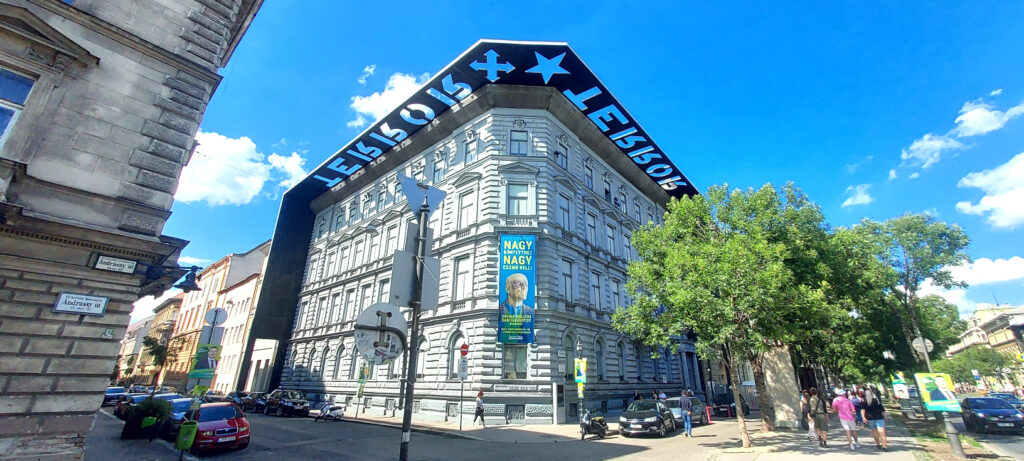Knowing about my strong interest in European history, various friends had over the years strongly recommended I visit Budapest from my home in Greece.
For whatever reason I had not managed to do so…until this year.

Hungarian airline Whizz Air took me there from Athens in just under two hours. All so very close and affordable at just 97 Euros for a return ticket. For an Aussie used to extremely long and expensive flights to the southern hemisphere, these short and inexpensive trips around Europe are a very pleasant experience.
I checked in to the Easy Star, a budget hotel extremely well located just off Andrassy Ut, which connects the city centre on the river with the main city park known as Varosliget. A magnificent tree-lined boulevard three kilometres long, Andrassy Ut is Budapest’s equivalent of the Champs Elysees in Paris.
Having established my “beach head” I was ready to start exploring this amazing city. An added bonus was that all public transport (trains, bus, trams and the underground metro) were free for seniors over 65. Charming old world eastern European architecture was in abundance.
The wonderful Danube River dissects the city into the higher ground of Buda in the west and Pest in the east, both separate towns in the past. Much of the city’s allure and charm emanates from its position around and along this great European waterway.
Elegant bridges cross it, vibrant pedestrian promenades run along both sides of it and the capital’s most famous landmark, the Royal Palace, rises majestically above its western bank.
There are many wonderful historical sites to be visited in Budapest, including the Palace on the magnificent Castle Hill precinct high up on Buda, the Citadella, the St Gellert Hotel pool and thermal spa complex, Varosliget city park and its Szechenyi pool and thermal baths complex, St Stephens Basilica and the Parliament building, to name but a few.
However, it was the Jewish Quarter and its role in Hungary’s recent past that was my main focus and interest. It is centrally located on the flatter Pest side close to the river and reeks of old and modern history, pathos and tragedy.

With a strong interest in European history I was aware of the role that Hungary played in the Second World War and in particular its treatment of the Jewish population in Budapest under German occupation.
The Jews and their quarter in Pest have had a long and ultimately tragic history. During the war this small district became a walled ghetto with 220,000 people crammed inside, of which half perished during the war. It is the only major European Jewish ghetto to have survived the Second World War largely intact.
Today there are three active synagogues in the Quarter. The largest, the Dohany, is a striking Byzantine building constructed circa 1859. It is Europe’s largest synagogue and the world’s second biggest (behind only New York) and can accommodate up to 3,000 worshippers.
It is also the oldest of the historical buildings in Pest, which include the Academy of Sciences (1867), the Opera House (1884), Parliament (1904) and the St Stephens Basilica (1905).
It is an impressive building which together with the adjoining Ghetto Wall, National Jewish Museum and Holocaust Memorial, occupies this city square.
Within the grounds are many gravestones of the poor souls who were interned and later died in the synagogue and it’s surrounds during the war.
The Holocaust Memorial is unique. It is in the form of a weeping willow tree with seven branches. An inscription from the bible reads: “Whose pain can be greater than mine”. Nearly 600,000 thin metal leaves on the tree have the names of the Hungarian Jews killed in the Holocaust. A broken brick has the single word “Remember” on it.
Today many buildings in the Quarter are in a state of decay. However, there has been an attempt in recent times to revitalise the area. Old buildings have been converted into trendy bars and cafes, catering for both local residents and the omnipresent tourists.

Of particular interest to me was the ‘Ruins Bars’ complex in narrow Kazinczy utca, which had been recommended by a friend. It is situated just 40 metres from the Orthodox Kazinczy synagogue on the opposite side of the street.
It is a collection of bars over two levels in an old, abandoned building, with lots of colourful artistic graffiti and plants. Drawing an international crowd it has a central void courtyard which creates an oasis to enjoy a drink and savour the unique experience that the Jewish Quarter offers. Words like trendy, hip and bohemian don’t do it justice.
Close by is a maze of historically significant courtyards which once emerged onto Dob utca. Dating back to the 18th and 19th centuries, this type of complex with residential buildings connected by a series of courtyards is typical of the Quarter.
Today it is a thriving commercial area of shops, bars and restaurants catering for both the locals and tourists. Again I was seduced into relaxing in a bar, soaking up the historical context of my visit with a pint of the superb local Hungarian brew, Preyer Gold lager.
And so it was that this truly unique Jewish Quarter located in the heart of cosmopolitan Budapest satisfied my craving for a connection with eastern European history and ambiance.
My remaining few days were jam packed full of all the other wonderful touristy venues mentioned to complete a fabulous week in this enchanting city.



